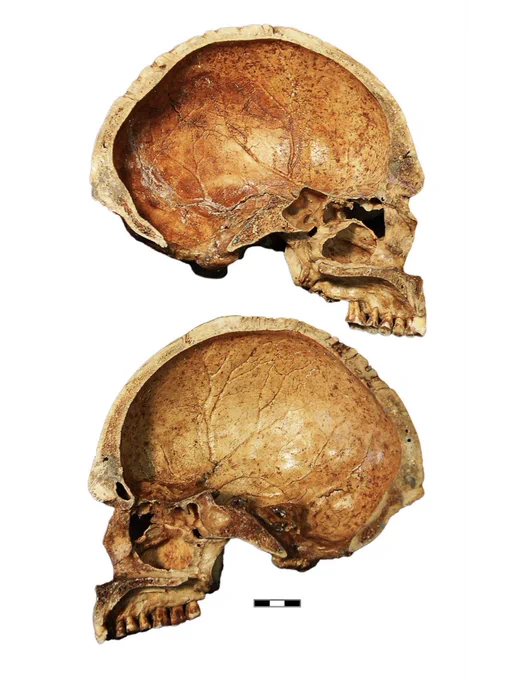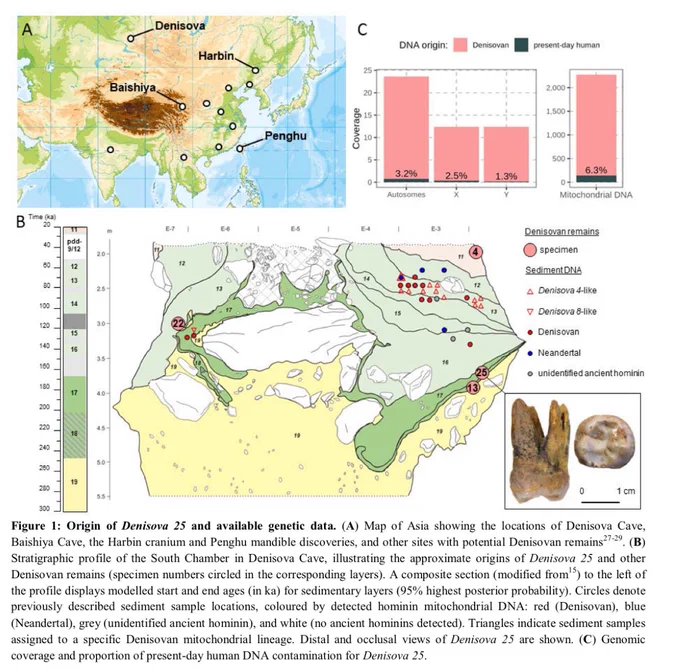Exploring the history of ancient Australians. Profile image is Bullip Bullip "King Billy" of the Wadawurrung
Ice Age Sahul
Joined March 2024
- Tweets 12,903
- Following 271
- Followers 22,618
- Likes 47,529
Pinned Tweet
After months of painful research, my article is published!
Huge thanks to @eweissunburied, @lowlandsapien & @ClstlObserver for reviewing, to the anonymous Australian archaeologist who offered crucial insights, and to @SamoBurja for asking me to write it
palladiummag.com/2025/10/17/…
Mungo Manic retweeted
Some additional thoughts on Yunxian, Homo longi, Denisovans, and sapiens origins
Mungo Manic retweeted
One of the greatest disappointments in the last 300 years of Western history: the discovery that the entire Australian interior was actually a desert
"The Desired Blessing"
This Hyperaustralian vision is based on an 1827 map by Thomas Maslen, an officer of the East India Company. After Oxley's 1817-18 expeditions discovered west-flowing rivers beyond the Dividing Range, the public imagination was captured by the idea of an Inland Sea. Maslen extrapolated these rivers as the headwaters of a vast "Great River" flowing across Australia's interior, and imagining the poorly-explored inlets at Derby to be a large delta, emptying the river into the Indian Ocean - he dubbed this "the desired blessing" of Australia. The necessary hydrocycle for such a drainage was supported by similarly imagined highlands along the Great Australian Bight, and a drainage basin that covered almost the entirety of the continent. Had it existed, it would have supported enormous fertile tropical regions, as well as inland shipping for trade and communications.
Sadly for this vision, reality was otherwise. As Maslen's book was being published in 1830, Charles Sturt's second expedition was returning with proof that Oxley's inland rivers in fact drained south, into the Murray, Lake Alexandrina and the Southern Ocean. Belief in the inland sea persisted until well into the second half of the century, until multiple north-south crossings of the continent had proved definitively that it did not exist, apart from the permanent salt pan of Lake Eyre. Maslen's supposed "Dead Level" of the interior was confined to parts of South Australia, with the northwest of the continent divided by a vast inland plateau. Therefore, rather than reliable orographic rainfall, the interior was dependent on southward extension of the Australian Monsoon - an unreliable pattern, and further hampered by a rain shadow effect from the northwestern highlands.
Yet there is now evidence that that pattern is beginning to shift. Long-term rainfall trends for the Lake Eyre basin show a sustained increase - some 100mm higher (50%!) since 1980. Partial fillings of Lake Eyre, once rare, now occur every few years. If the trend continues, it's conceivable that within a few decades, the lake may be permanently full, perhaps even begin to grow...
Now that would be a blessing.
Mungo Manic retweeted
Manusia Wajak merupakan bagian dari Koleksi Dubois yang merepresentasikan early Homo sapiens di kawasan Asia Tenggara. Apakah spesimen tersebut, beserta spesimen manusia Hoekgrot, Gua Kecil, dan Gua Jimbe, termasuk yang dikembalikan ke tanah air? 🤷🏽
#Sejarah 24 Oktober 1888 fosil tengkorak Wajak 1 ditemukan oleh insinyur tambang B.D. van Rietschoten ketika sedang mencari marmer di ceruk lereng Gunung Låwå dekat kampung Wajak di Tulungagung. Temuan fosil manusia modern ini membawa Eugène Dubois ke Jawa
Also I meant that bride capture sometimes looked more like elopement. Because brides were bestowed, romantic arrangements were rare and usually illegal (the girl's family would still consider it "theft")
This tweet is unavailable
One difference: I've never seen a reference to women being dragged by their hair. That may be because many Australian forager women had relatively short hair as they were often cutting it to braid into string
One theory is that these thick skulls were selected for by millenia of violence (punishments, duels and battles often involved getting whacked on the head). I also suspect Denisovan genes were at play
The average human skull is 7mm thick. But strongman Gino Martino's skull is 16mm. He uses it to break baseball bats and hammer nails thru wood
The thickest Australian skull (WLH-50) was 15-19mm thick. Ancient Australia was a wild place!
Australian & Tasmanian foragers had the thickest skulls of any modern humans, as shown by this bisected skull from Tasmania
(Vasiliev et al, 2015)
This caveman trope was partly inspired by the Australian practice of bride capture:
"Being first stupified with blows, inflicted with clubs or wooden swords, on the head, back, and shoulders, every one of which is followed by a stream of blood, she is dragged through the woods by one arm, with a perseverance and violence that one might suppose would displace it from its socket."
-David Collins, Lieutenant Governor of the Colony of New South Wales, 1798
Many British colonists assumed that most forager marriages began with violent abductions. But later study showed that the norm was bride bestowal and that bride capture was often consensual (except in regards to the father and/or lawful husband)
(Image by Vincent Woodthorpe, 1803)
The premise of the paper is actually interesting: did ancient Australians cause the megafauna extinction?
So it's doubly annoying that the authors burn their credibility in their eagerness to prove "First Peoples" were environmentally conscious caretakers of the land
"You could say that First Peoples may have been the continent's—and possibly the world's—first paleontologists"
Australian archaeologists once again promoting the conspiracy theory that Australian foragers were *actually* pacifist farmers who dabbled in evolutionary science
Actually more like both in the same generation. Here he is with his bow. RIP
But the future is bright
It still feels like magic that the biography of an entire species can be extracted from a single 200,000 year-old tooth
In short, a few questions are answered but more are raised. There is still a perplexing lack of agreement between genetic models and especially between archeology and genetics. I feel like an important piece of evidence is still missing
Highlights from this landmark study:
1. This genome (Denisova 25) is THREE TIMES older than the first one (Denisova 3)
2. Suggests Oceanians are part of an earlier migration than South & East Asians
3. A super archaic hominin admixed with Denisovans (Homo erectus?)
4. The main Denisovan population ancestral to Oceanians is very old and divergent and was possibly encountered in South Asia
5. Proof of additional admixture events between Neanderthals & Denisovans (the braided stream is looking rather multi-regional)





































